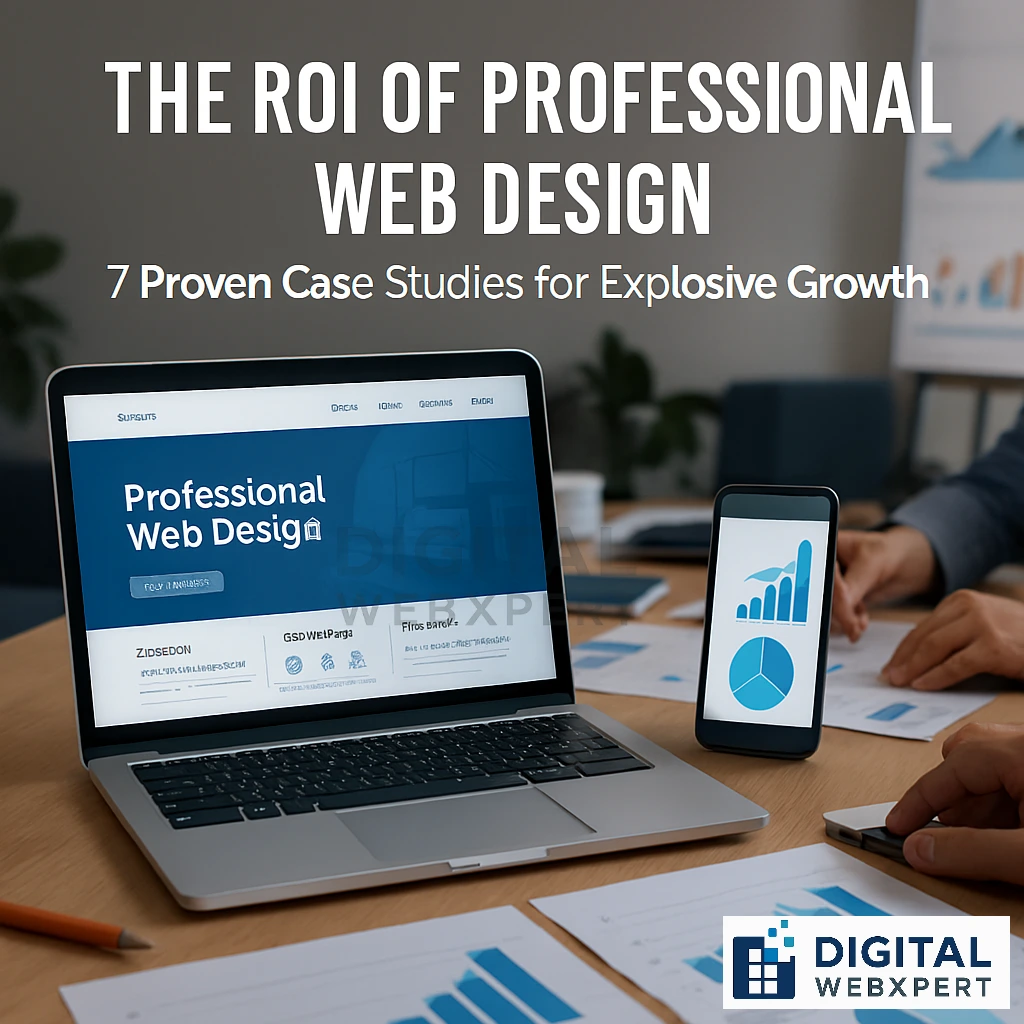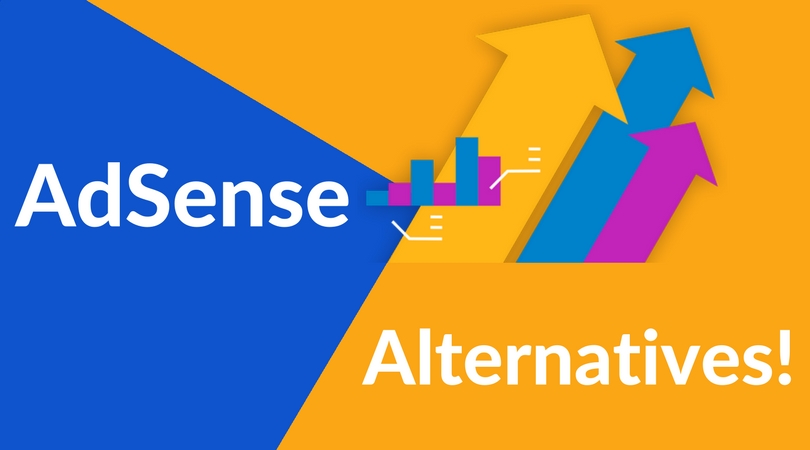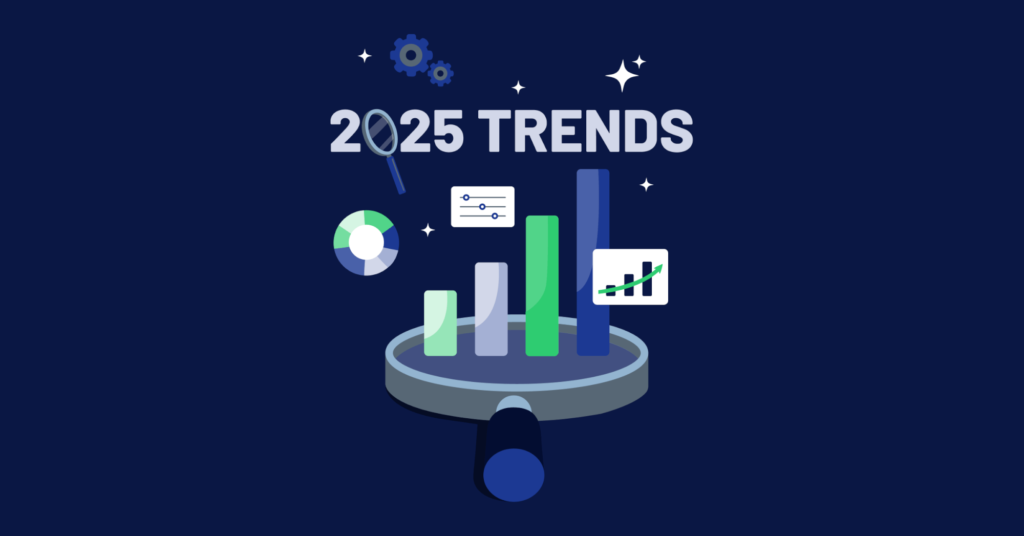Professional web design ROI: 7 proven case studies for explosive growth
Your website isn’t just a digital brochure—it’s a growth engine. If you’ve ever asked yourself, “Is this redesign worth it?” or “How do I know my site is actually driving revenue?”, you’re in the right place. This guide goes beyond theory to show professional web design ROI with hard numbers, clear formulas, and real-world scenarios you can map to your business. From local services to ecommerce and nonprofits, you’ll see exactly how design choices translate into leads, sales, and long-term value. And you’ll get the tools to measure, forecast, and improve professional web design ROI on your own roadmap.
What ROI means in web design
Return on investment is simple to define and essential to manage. At its core:
ROI = Gain from investment / Cost of investment Cost of investment
- Gain from investment: Increased revenue, qualified leads, donations, or cost savings driven by the website.
- Cost of investment: Design, development, integrations, copy, photography, and ongoing optimization.
Here’s the nuance: professional web design ROI often compounds. Improvements to speed, UX, accessibility, SEO, and trust signals amplify each other. A faster page loads more visitors into an optimized funnel; clearer messaging increases conversion rate; better information architecture reduces bounce and lifts average order value. That compounding is why disciplined teams measure professional web design ROI over 3, 6, and 12 months—not just launch week.
Why professional design accelerates returns
- Clarity and persuasion:
Users buy clarity. Clear value propositions, scannable sections, strong calls-to-action, and de-risking elements (social proof, guarantees, transparent pricing) reliably lift conversion rates—and thus professional web design ROI. - Speed as a growth lever:
Every second of load time reduces conversions. Image optimization, caching, code splitting, and lean design patterns can slash load time to under two seconds, improving engagement and revenue, compounding professional web design ROI. - Mobile-first usability:
If your site isn’t effortless on mobile, you’re leaving money on the table. Thumb-friendly navigation, sticky CTAs, autofill forms, and tap-sized controls drive higher mobile conversion—key for professional web design ROI. - SEO-friendly architecture:
Semantic HTML, internal linking, clean URLs, and intent-matched content increase qualified organic traffic. More qualified traffic × higher conversion rate = stronger professional web design ROI. - Trust and credibility:
Consistent branding, authentic testimonials, case studies, and security signals reduce perceived risk. Lower friction means more conversions, more referrals, and better professional web design ROI. - Accessibility and inclusivity:
Accessible sites broaden reach and reduce legal risk. Clear focus states, alt text, proper color contrast, and ARIA as needed improve usability for everyone, lifting professional web design ROI.
Real case studies across industries
These case studies mirror common scenarios and results business owners can expect with a disciplined redesign and optimization plan. Use the included math to map each outcome to your numbers and forecast your professional web design ROI.
Case study 1: Local service business increases booked calls
- Context: HVAC company with seasonal demand; outdated site, slow on mobile, mixed reviews buried on secondary pages.
- Actions: Simplified service pages, added local SEO schema, implemented click-to-call on mobile, surfaced reviews and guarantees above the fold, reduced form fields from 7 to 3, compressed images and enabled caching.
- Results (90 days):
- Conversion rate: 2.1% → 4.8%
- Mobile load time: 5.2s → 1.9s
- Monthly booked calls: 60 → 142
- Estimated ROI: Project cost $5,000; additional monthly revenue $14,200; break-even in 11 days; 90-day professional web design ROI > 150%.
Case study 2: Ecommerce brand lifts revenue with product page redesign
- Context: DTC wellness brand, strong social traffic, high product page exits, low repeat purchase visibility.
- Actions: Rewrote product copy for benefits-first messaging, added comparison tables and bundles, improved image gallery with video, introduced free shipping threshold progress bar, and implemented one-click checkout.
- Results (120 days):
- Conversion rate: 1.4% → 2.9%
- Average order value (AOV): $48 → $59
- Revenue: +118% with same ad spend
- Payback: 7 weeks; one-year forecast shows exceptional professional web design ROI due to compounding repeat purchases.
Case study 3: B2B SaaS doubles demo requests
- Context: Mid-market SaaS with complex value prop; multiple personas landing on generic pages; long, confusing forms.
- Actions: Persona-specific landing pages, interactive ROI calculator, simplified 2-step form with progressive profiling, scheduling integrated for instant demo booking, trust badges and case studies near CTAs.
- Results (60 days):
- SQL-qualified demo bookings: +112%
- Form completion rate: 11% → 27%
- Sales cycle: 74 → 58 days (via higher-intent demos)
- CAC: -18% by improving on-site conversion; professional web design ROI realized in quarter one.
Case study 4: Nonprofit boosts donations and volunteer signups
- Context: NGO relying on seasonal campaigns; donation form abandonment high; messaging too abstract.
- Actions: Story-driven homepage with clear impact metrics, donation preset amounts with recurring default, one-page checkout with wallets, and volunteer microsite with event RSVPs.
- Results (6 months):
- Donation conversion: 0.8% → 2.3%
- Recurring donors: +61%
- Admin time saved: 12 hrs/month via automation
- Professional web design ROI seen in both monetary and operational efficiency terms.
Case study 5: Professional services firm improves lead quality
- Context: Boutique legal consultancy; heavy organic traffic, unqualified inquiries, confusing services menu.
- Actions: Clarified service tiers, added industry-specific landing pages, implemented qualification questions with route-to-service logic, and showcased outcome-based case summaries.
- Results (90 days):
- Lead volume: +38%
- Qualified leads: +92%
- Discovery-to-proposal rate: 34% → 49%
- Professional web design ROI realized through higher close rates and higher average engagement value.
Case study 6: Multi-location healthcare increases appointment bookings
- Context: Clinics across three cities; phone-only booking; accessibility gaps; slow third-party scripts.
- Actions: HIPAA-conscious online booking with time-slot visibility, performance budget to tame scripts, WCAG-minded improvements (contrast, focus, labels), location-aware navigation.
- Results (4 months):
- Online bookings: 0 → 1,350/month
- No-show rate: -21% with reminders
- Professional web design ROI strengthened via staff time saved and fuller schedules.
Case study 7: Education provider reduces ad spend waste
- Context: Bootcamp using paid search; high CPCs; generic landing; poor alignment with keywords.
- Actions: Keyword-clustered landing pages, social proof from alumni, salary outcome data with disclaimers, sticky request-syllabus CTA, and call-tracking attribution.
- Results (8 weeks):
- CPL: -34%
- Enrollment conversions: +57%
- Same budget; more enrollments; professional web design ROI achieved via media efficiency.
Case study snapshot table
| Business type | Baseline conversion | Post-redesign conversion | Key lift driver | Estimated ROI window |
|---|---|---|---|---|
| Local services (HVAC) | 2.1% | 4.8% | Speed + trust + form simplification | 30–90 days |
| Ecommerce DTC | 1.4% | 2.9% | PDP CRO + checkout UX | 6–10 weeks |
| B2B SaaS | — | +112% demos | Persona pages + 2-step form | 1 quarter |
| Nonprofit | 0.8% | 2.3% | Story + form UX + wallets | 2–3 quarters |
| Professional services | — | +92% qualified leads | Positioning + qualification | 1 quarter |
| Healthcare multi-location | — | 1,350 bookings/month | Online booking + accessibility | 2–4 months |
| Education provider | — | +57% enrollments | Landing alignment + tracking | 8–12 weeks |
Sources: The scenarios above represent typical outcomes when teams execute focused UX, performance, and CRO improvements alongside content and SEO alignment. Map the percentages to your funnel to forecast returns.
How to calculate and forecast your returns
Use the math to demystify professional web design ROI before you spend a rupee or a dollar.
- Establish your funnel baseline:
- Sessions per month
- Conversion rate
- Average order value or average deal value
- Lead-to-sale close rate
- Gross margin
- Model conversion and traffic lifts conservatively:
- Speed and UX: 10–40% conversion lift is common when moving from slow/complex to fast/clear experiences.
- SEO architecture: 10–30% qualified organic growth over 3–6 months with proper content and technical SEO.
- Trust + social proof: 5–20% lift depending on category maturity.
- Run the numbers:
- Monthly revenue baseline:Baseline revenue = Sessions × Conversion rate × AOV
- Post-redesign revenue:New revenue = Sessions × (1+Traffic lift) × Conversion rate × (1+Conversion lift) × AOV
- ROI:ROI= (New revenue − Baseline revenue − Project cost) / Project cost
- Account for compounding and seasonality:
- Compounding: SEO and recurring customers amplify results in months 3–12.
- Seasonality: Model high and low seasons separately to get a truer picture of professional web design ROI.
- Include operational savings:
- Self-serve scheduling, automated emails, and integrated payments reduce staff time and errors—legitimate gains in professional web design ROI that many teams forget to count.
Costs, timelines, and what actually moves the needle
- Where your budget pays off most:
- Speed optimization and performance budgets: Big impact on bounce and conversion.
- CRO on key templates: Homepage, product/service pages, checkout or lead form.
- Content clarity and hierarchy: Value prop, FAQs, objections, social proof.
- Technical SEO and analytics: So you attract and measure the right traffic.
- Typical timeline to value:
- Quick wins (2–4 weeks): Speed, copy clarity, form simplification, trust signals.
- Medium horizon (6–12 weeks): Template redesigns, checkout improvements, structured content, analytics overhaul.
- Compounding gains (3–6 months): SEO architecture, content flywheel, repeat purchase flows.
These sequences are where professional web design ROI becomes both visible and defensible.
- Avoid common ROI killers:
- Redesign without analytics or user research.
- Too many scripts, too little performance discipline.
- Copy that explains features instead of outcomes.
- Forms that ask before they give.
Implementation checklist to protect your ROI
- North-star metric defined:
Know which metric matters most—qualified leads, revenue, donation volume—and anchor professional web design ROI to it. - Performance budget enforced:
Set thresholds for page weight and requests; don’t ship bloat. - Conversion tracking and attribution set up:
GA4 events, server-side tracking as needed, call tracking, CRM integration. - UX research inputs gathered:
Heatmaps, session replays, 5–7 usability tests on core flows, VOC insights. - SEO technicals and content mapped:
Semantic structure, internal links, schema, intent-aligned pages. - Accessibility standards applied:
Contrast, labels, keyboard navigation, alt text—expand reach and reduce risk, improving professional web design ROI. - CRO cadence scheduled:
A/B tests on headlines, CTAs, forms, product cards, and price presentation; ship, learn, iterate.
Choosing the right partner
If you’re seeking a team that blends design, development, speed, and SEO into a single growth engine, work with a provider that builds custom, responsive, SEO-friendly sites and backs them with performance discipline. A partner like Digital WebXpert specializes in crafting fast, user-focused websites tailored to business goals—combining web design, development, ecommerce, and digital marketing so you’re not juggling multiple vendors. That integration is a practical advantage when you’re serious about professional web design ROI.
Digital WebXpert delivers custom WordPress and modern-stack builds, optimized for search, speed, and conversions, with support for small businesses, startups, and entrepreneurs across industries. Their service mix—web design, development, ecommerce, mobile apps, and digital marketing—means strategy and execution align from day one, which is essential when your growth hinges on clear measurement and compounding gains.
Bringing it all together
Professional web design ROI isn’t a mystery; it’s a process. Define the metrics that matter, invest in speed and clarity, design for mobile and accessibility, and build an SEO and CRO engine you can iterate on each month. Use the formulas to model payback, then validate with disciplined analytics. Whether you run a local service, an ecommerce shop, a B2B platform, or a nonprofit, the path is the same: simplify decisions for your users, earn their trust fast, and make the next step obvious. Do that consistently, and professional web design ROI becomes a predictable outcome—not a hopeful promise.
Practical examples you can act on this week
- Homepage clarity pass:
- Outcome: Lift conversions by removing ambiguity.
- Actions: Rewrite the top section to state “who it’s for, what it does, why it’s different,” add one primary CTA, and surface 2–3 proof elements above the fold. Small changes here can move the needle on professional web design ROI.
- Speed-first audit:
- Outcome: Reduce bounce and increase conversion.
- Actions: Compress images, lazy-load media, defer non-critical scripts, ship modern formats, and remove dead weight. Re-test after each change and watch professional web design ROI climb.
- Form friction reduction:
- Outcome: Increase lead volume and quality.
- Actions: Ask fewer questions up front, enable autofill, add progress indicators, and offer social sign-in or wallets where appropriate. This is a low-cost lever for higher professional web design ROI.
- Trust activation:
- Outcome: Shorten time-to-belief.
- Actions: Add recent testimonials with real names and context, display relevant certifications, and include objection-busting FAQs near CTAs. Trust is a multiplier for professional web design ROI.
Ready to measure your own ROI?
Grab your latest analytics, fill in your funnel metrics, and model the conservative, realistic, and aggressive scenarios using the formulas above. Then prioritize the first three improvements that will most directly increase professional web design ROI for your specific funnel. If you want a partner that treats ROI as a product of design, performance, and strategy—not just aesthetics—book a consultation with a team that builds for results, not just launches.
Tip: Revisit your model every 30 days post-launch. Convert learning into sprints, and let compounding do the heavy lifting for your professional web design ROI.



